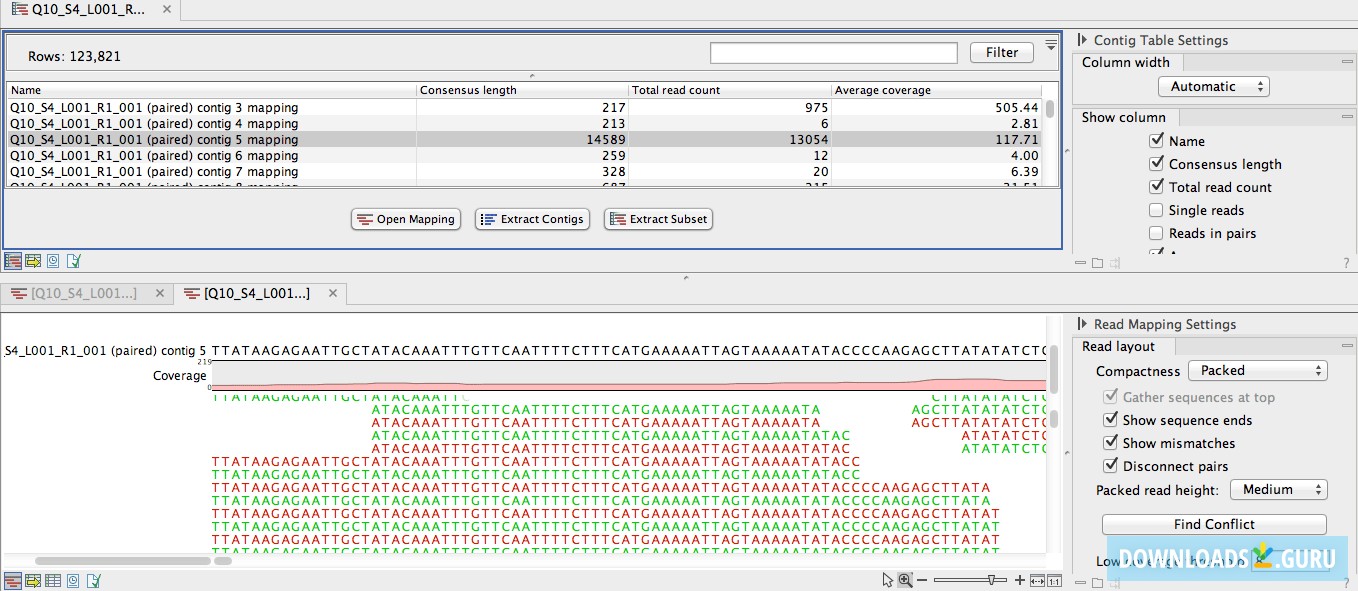

- #CLC GENOMICS WORKBENCH DUKE HOW TO#
- #CLC GENOMICS WORKBENCH DUKE INSTALL#
- #CLC GENOMICS WORKBENCH DUKE SOFTWARE#
- #CLC GENOMICS WORKBENCH DUKE PASSWORD#
- #CLC GENOMICS WORKBENCH DUKE DOWNLOAD#
There is a single difference when comparing a CLC job on Euler with a local run using the CLC genomics workbench client. For all other tasks that can be achieved with the CLC genomics workbench client, it works the same way.
#CLC GENOMICS WORKBENCH DUKE HOW TO#
Submitting jobs from the CLC genomics workbench clientĪs an example for demonstrating how to submit a job from the CLC genomics workbench client to the Euler cluster, we choose a BLAST search. Mounting NAS shares from the IT services storage group been tested on Euler and should work. For this, one has to click on a file in the local CLC data location and move it to the server data location that is attached to each CLC genomics server account. On one hand, the data can directly be imported into the CLC genomics workbench client and then be moved to the server data location by drag-and-drop within the client. In general there are two different ways of importing data to a server data location. Please note that there is no backup for these data sets. After the jobs have finished, the results should be copied back on a local machine or any other storage location. Unless a user owns some permanent space in Euler, the server data locations are considered as scratch space that can be used for temporary storage of data and will be purged on a regular basis.

Therefore we attach a server data location (one folder) to each CLC genomics server account that is created on Euler. The user data that is processed by the CLC genomics server installation on Euler first needs to be imported into the server. You will only be able to see and use the content of your own data location (unless you explicitly ask us to change the permissions in case you would like to share data with other users). When connected to the CLC genomics server, you will be able to see all server data locations (the folder with a blue dot next to them) but not their content. Then click on the Login buttonĪfter the login procedure, the server data locations are displayed in the Navigation Area menu.
#CLC GENOMICS WORKBENCH DUKE PASSWORD#
#CLC GENOMICS WORKBENCH DUKE DOWNLOAD#
Click on the Download Plug-ins tab and choose the CLC workbench client plugin and click on Download and InstallĪs a last requirement you need to request a CLC genomics server account.Start the CLC genomics workbench (on Windows computers you have to start it as administrator, i.e., right-click the CLC genomics icon and choose run as administrator).
#CLC GENOMICS WORKBENCH DUKE INSTALL#
Furthermore, you need to install the CLC workbench client plugin, that is used for the communication between the CLC genomics workbench and the CLC genomics server. First of all, you need an installation of the CLC genomics workbench client on your local computer. Requirements for using the CLC genomics serverįor using the CLC genomics server installation on Euler, certain requirements need to be fulfilled. Workbench versions compatible with genomics server If you would like to use this service, then please contact cluster support to request your CLC account. The CLC genomics server uses local accounts for authentication. With a single click within CLC Genomics Workbench it is possible to offload resource-demanding tasks to an HPC cluster, that would not possible to analyse in a desktop computer environment. It contains the same tools as the CLC Genomics Workbench, such as mapping of reads to a known reference, de novo assembly, and variant calling.
#CLC GENOMICS WORKBENCH DUKE SOFTWARE#


 0 kommentar(er)
0 kommentar(er)
